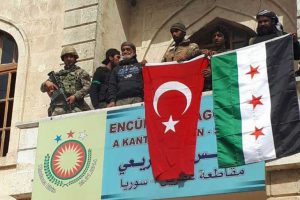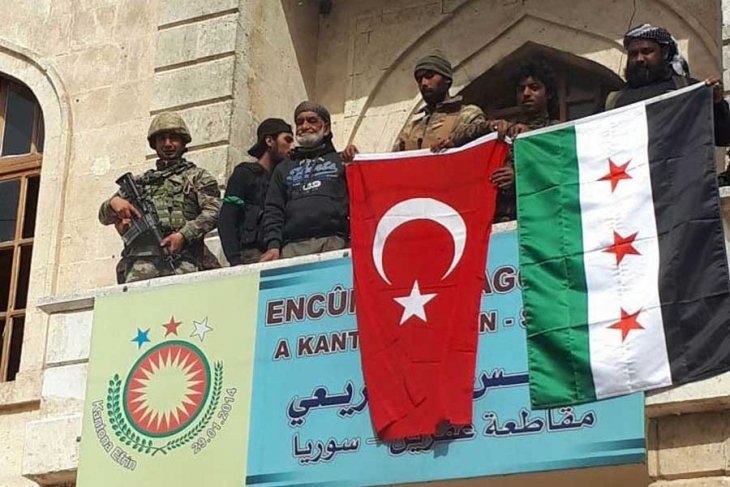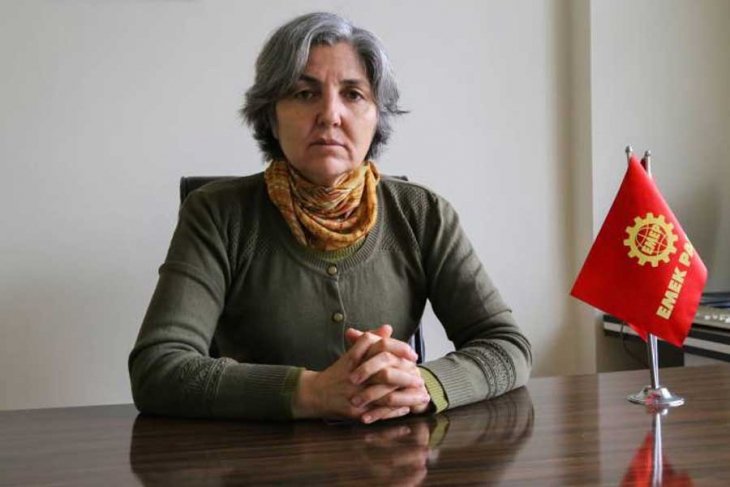
Perhaps, I should start with what should be said at the end. Just as the start of the military operation in Afrin cannot be explained by the determination of Turkey, the withdrawal of the Kurdish forces from Afrin and the fall of Afrincannot be explained by the situation of the Kurds alone. The struggle for hegemony in Syria – between the US and Russia – is becoming clearer and the developments in cities such as Afrin, Gutha, Idlib and Deir er-Zor become meaningful within this struggle. For example, the Syrian regime, worried about Turkey controlling Afrin and being faced with a lasting problem similar to that of Israel’s occupation of Golan, wanted to send the military to the city and did end up sending a limited militia force. However, perceiving the US permanent presence as the real threat, Russia blocked the attempts of the Syrian regime and opened the path to the fall of Afrin.
It is important to remember some key points in order to better understand what has been happening in Afrin and Syrian today.
Afrin is one of the three regions the Kurds had seized in the summer of 2012 and established cantonal administration. In fact, it was one of Syria’s most peaceful regions and had taken continuous migration until Turkey’s military operation. On the other hand, Afrin was the only Kurdish canton to the west of the Euphrates river. Joining up of the Afrin with Kobane canton was obstructed by the “Euphrates Shield” with the support of the Russians, just as the Afrin operation was sanctioned. Therefore Afrin had been largely isolated from other Kurdish regions. To the east of Euphrates, despite objections from Turkey, Kurds have been collaborating with the US, starting with the resistance in Kobane. This collaboration has reached a new level during the Raqqa- Deir er-Zor operation; with US supplying heavy weapons to Democratic Syrian Forces (DSF) – the biggest component of which was the YPG. During this period, Russia in negotiation with the Kurds but also giving the ‘go ahead’ to operation Euphrates Shield, was trying to limit the strength of the Kurds and was forcing them to a solution under its own guardianship. On the other hand, in order to block a possible intervention in Afrin by Turkey, it had deployed soldiers to the Afrin borders.
During the Trump era, the United States shifted into an interventionist stance that escalates tension in contrast to the Obama era of protecting US interests through a reconciliation process throughout Syria and the region (the Middle East). This policy was declared by the US missile attack on the Shayrat Airbase in Homs in April 2017; supposedly in response to a chemical attack on Khan Sheikhun near Idlib by the Syrian regime. At the end of 2017, Putin visited the Russian Hmeymim Airbase in Latakia where he met with Assad. Putin stated that Russia would withdraw a large part of its troops in Syria following this meeting; and made a call to other forces in Syria – of course, primarily to the US – to withdraw their military forces. TheUS response to this call was, “if Russia is withdrawing, it is their choice, but we will continue to maintain stability in the country with our allies”. In fact, Russia did not pull out at all because it had signed a new agreement with the Syrian regime on the use of airbases in Tartus and the sea in Latakia. In fact, this call was a call against the US efforts to be permanent in Syria.
At a time when the struggle for hegemony between Russia and the US were becoming increasingly visible, the Syrian regime stated – using a previously unseen tone – that “forces cooperating with the US are traitors”. These developments also mobilised the leadership in Turkey; they have been looking for an opportunity to start a military operation in Afrin. The army was sent to the border with Afrin. The statement by the US in January 2018, announcing the establishment of a 30-thousand-strong ‘border security’ force, which also included the DSG, almost became the statement that triggered the recent events. The US statement of intent to become permanent in Syria, through cooperation with the Kurds – the attempt to set up an army was significant in the attempts to set up a federal government, in which the US wanted to be the one help the Kurds achieve instead of Syrian regime and Russia – led to the ‘go ahead’ Turkey received from Russia to attack the Kurds. Following negotiations with Russia and the Russians opening the Syrian airspace to Turkish jets, the Afrin offensive started on 20 January.
Russia, giving Turkey the ‘go ahead’ once again following operation ‘Euphrates Shield’, wanted to further weaken the Kurds and to corner the US, using another member of NATO in Turkey. To nullify this plan, the US first stated that “Afrin is not an area we operate in”, followed by a statement of its readiness to cooperate with Turkey on the issue of Manbij, the next target for Turkey following Afrin; a joint commission to resolve this issue was agreed upon during the recent visit to Turkey by the Secretary of State, Rex Tillerson, now removed from his post. The concern for the US was not the Kurds but to make permanent its bases to the east of Euphrates. It was open to negotiations on other issues such as providing intelligence support for operations on the PKK forces in Kandil and Shengal.
At the end of the first month of the Afrin operation, it was reported that militia forces that support the regime, and supported by Iran, entered the city. As we pointed out at the beginning, the Syrian regime and its most important regional supporter Iran were concerned with Turkey becoming permanently established in Afrin and wanted to prevent its advance to the city centre; despite being small in numbers, the arrival of militia forces in Afrin were seen as a manifestation of this intent. What led to the failure of this attempt was the stance of their ally Russia. This attempt would mean the end of the cooperation established between Russia, Turkey and Iran in Astana and pit Russia and Iran against Turkey. Russia wanted to continue cooperation with Turkey to derail plans of the US.
What these developments meant for Afrin was that the US, making plans for the east of the Euphrates, had abandoned the Kurds and Russia, in an attempt to use the anti-Kurdish policies of Turkey against the US, opened the gates of Afrin to keep Turkey on its side. As a result, Kurds – abandoned by both the US and the Russian camps, fighting for dominance in Syria – had to adopt a tactic of withdrawal under the current conditions.
This is the “national victory” that Turkey achieved in Afrin in a nutshell; in cooperation with the FSA, which is made up of jihadist gangs. Another point that must be mentioned here: the fact that Afrin was taken over without being destroyed is said to be a proof of the Turkish sensitivity towards the civilian population. On the contrary, the reason for the take over of Afrin without destruction – unlike like Raqqa and other cities – is the fact that fighters had already left the city. Otherwise, never mind Syrian towns, today Cizre, Şırnak and Silopi [Kurdish towns in eastern Turkey] all lie in ruins!
Before we finish, let us make it clear that when the dust from the air of victory is settled, Turkey will have to face up to the reality in Syria. For, what is presented as a victory only means Turkey getting dragged further into the middle of a region where two imperialist powers have locked horns. Furthermore, Turkish government’s perception that Kurdish gains are a threat to its security only makes it more possible for these imperialist powers to use Turkish sensitivities to serve their own interests.
Hence, the perceived victory in Afrin makes it easier for the government to jeopardise Turkey more. Therefore, in contrast to the propaganda that is spread, the way to nullify imperialist plans is not intensified interventionist policies, intertwined with imperialist plans but the defence of peaceful policies that will serve the interests of regional peoples.
By Yusuf Karatas


